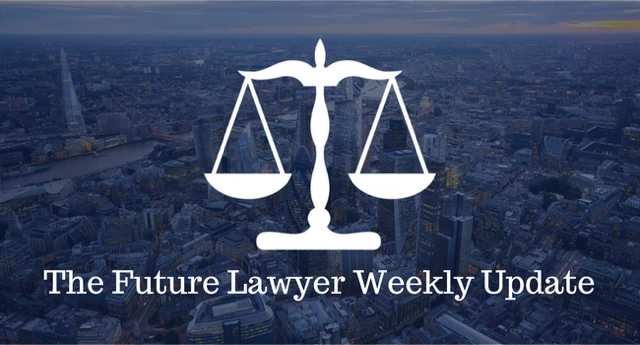
Commercial Awareness
September 14, 2023
The Future Lawyer Weekly Briefing – W/C 25th September 2023
September 25, 2023BURGER KING’S WHOPPER LAWSUIT
The fast-food chain Burger King faces a class-action lawsuit for alleged false advertising. The primary accusation is that Burger King has misled its customers by making the famous Whopper burger appear larger on the menu than in reality.
Critical issues
The US court rejected Burger King’s motion to dismiss. There are several reasons to explain the court’s decision.
The plaintiff’s claims were that:
- Burger King has exaggerated its burgers’ size in its advertisements since September 2017. The claimants also mention that Burger King previously advertised the size of its Whopper on its menu more fairly.
- The Whopper advertisement purports a 35% increase in burger size, with 100% beef content, when this is allegedly not the case.
However, Burger King argued that:
- Food in advertisements has always been made to look as appetising as possible. Therefore, reasonable consumers looking at food advertising boards are expected to be aware of this information.
- It makes it very clear to the consumer how much beef is in the Whopper burger. This information is readily available from the BK website, which clarifies that the Whopper contains ¼ pound of beef.
Broader implications
The requirement for greater transparency in how food products are advertised to the public is one of the significant societal implications. Dishonest advertisements can lead to consumers being dissatisfied. Other fast-food restaurants might be encouraged to adopt transparency in advertisements as consumers demand truthfulness, especially concerning portion sizes.
In addition, fast food chains may start to realise that misleading customers can lead to long-term reputational damage as well as potential legal consequences. Therefore, to avoid similar lawsuits and maintain the trust of their customers, restaurants may plan to reassess their marketing strategies. This could involve ensuring that the visuals and descriptions used in food advertisements align with the food served to customers.
Depending on the lawsuit’s outcome (especially if the plaintiff prevails), we could see more restaurant chains focusing on customer transparency. It could shift the advertising culture, and businesses may avoid over-exaggeration and misrepresenting their products.
Ultimately, consumers stand to benefit from more explicit information about the products they purchase, enabling them to make more informed choices regarding their food consumption.
How could a law firm be involved?
A law firm could be involved in this case by representing either the plaintiffs or the defendant. If representing the plaintiffs, the law firm would work to build a strong case against Burger King, gathering evidence to support the claims of false advertising. They would seek to prove that Burger King’s overstated menu items caused financial losses to those who bought the burger.
On the other hand, if representing Burger King, the law firm would defend Burger King against all its allegations. This could involve arguing that the advertisements were not deceptive and that consumers should have reasonably understood the nature of food advertisements. Furthermore, they would aim to dismiss the case or reach a settlement that would minimise the financial impact.
Article written by Chirag Morar
PRIVATE EQUITY IN EUROPEAN FOOTBALL
European football clubs have always been regarded as prestigious assets in the sports and entertainment sector. Traditionally, owning a stake in a football club, whether large or small, carried immense prestige.
However, a significant shift is underway. Private equity firms, especially those headquartered in the United States, are increasingly directing their focus towards European football clubs, driven by their pursuit of financial returns rather than reputation.
In this article, we will look at the historical context, commercial drivers, deal structures, and potential implications of private equity investments in European football.
Recent developments
Recent data from a Pitchbook report reveals that more than a third of Europe’s football clubs in the ‘big five’ leagues now have funding from US-based private capital. A prominent example of this trend is the sale of Chelsea Football Club to a consortium of US private equity investors in May 2022, with a price tag of £2.5 billion in a leveraged buyout.
It’s important to note that Pitchbook’s ‘private capital’ category encompasses various investment models, including private equity, venture capital funds, and consortiums that employ leveraged buyouts secured against the asset they aim to acquire.
Why are private equity investors interested?
Several compelling reasons drive private equity funds to invest in or acquire European football clubs:
- Growth in Asset Valuation: European football clubs have experienced significant valuation growth. According to the 2023 Football Benchmark Valuation Report for Football Clubs, the combined enterprise value of the top 32 European clubs increased by 96% from 2016 to 2023, surpassing the FTSE 100 Index. This growth, along with future revenue prospects like media rights commercialisation and the legalisation of sports betting in the US, has captured the attention of private equity investors.
- Financial Distress: Despite their impressive growth, many top-tier football clubs suffered revenue losses due to the COVID-19 pandemic, particularly from the absence of matchday revenues. Football clubs sought ways to refinance debts and strengthen their balance sheets to alleviate financial strain. Private equity investors stepped in to provide much-needed liquidity, often on favourable terms.
- Investment Structure: Private equity firms commonly opt for minority stakes in European football clubs, a model that benefits owners and investors. Selling minority stakes allows club owners to quickly raise funds without incurring debt. For investors, this approach reduces risk compared to a majority takeover, which is costlier and more competitive. In addition, smaller investments are more manageable, especially in a high-interest-rate environment.
Are there recent examples of this?
A compelling example in this context is Everton FC, a club that has grappled with financial challenges since 2016 and has recently been acquired by the US-based investment firm 777 Partners.
At first glance, investing in Everton may not appear to be the most obvious choice. In March, the club reported financial losses for the fifth consecutive year, resulting in cumulative losses exceeding £430 million over the last half-decade. Furthermore, Everton is constructing a new stadium, and the costs have escalated to £760 million, a £260 million increase from figures quoted by the club just last year.
However, 777 Partners see substantial potential in the football market, which they believe outweighs Everton’s current financial challenges. They perceive football clubs as lucrative entities capable of generating revenue through stadium commercialisation, establishing brand partnerships, and securing sponsorships.
Notably, this acquisition was a majority takeover (with 777 Partners acquiring 94.1% of the Club’s shares), and it is worth highlighting that 777 Partners already possesses an impressive portfolio that includes several European football clubs.
What happens next?
Private equity funds have varied exit timelines. When they do decide to exit, it will be interesting to observe the macro-level effects on the European football landscape.
Who will take over? What will the return on investment look like? Can these investment strategies be replicated in other sports?
These questions will shape the future landscape of private equity in European football.
Article written by Avishai Marcus
MICROSOFT’S ACTIVISION DEAL: WILL THE NEW DEAL BE SUCCESSFUL?
Microsoft’s acquisition of Activision was quickly labelled one of the most influential deals in gaming history. The news took the world by storm, and everyone has been heavily invested in whether this deal will go through after all the pushback it has and continues to receive.
Critical issues
Both the Federal Trade Commission and the U.K.’s Competition and Markets Authority have attempted to block the since Microsoft would become the world’s third-largest gaming company by revenue.
Microsoft would supposedly have the means and the motive to harm competition in the cloud gaming market as it would be able to manipulate Activision’s pricing or degrade Activision’s game quality on rival consoles by changing the terms of access to Activision’s content.
This would constitute harm to consumers as it would substantially lessen the competition in the market of cloud gaming services. However, it’s worth mentioning that the merger has already been approved in the European Union, Ukraine, Saudi Arabia, Brazil, Serbia, Chile, Japan, South Africa, South Korea, New Zealand and China, and there is still a chance the CMA will greenlight the deal albeit a small one.
Since its inception, the deal has been the target of the Competition and Markets Authority (CMA), the European Commission (EC), and the Federal Trade Commission (FTC), as they all considered it could limit competition in this gaming market. The EC greenlit the transaction, subject to compliance with commitments offered by Microsoft.
Part of these commitments is granting licences of popular Activision games such as ‘Call of Duty’ to rival game streaming platforms, which the European Union antitrust chief, Margrethe Vestager, finds to be ‘practical and effective’ as they significantly improve the condition for cloud game streaming. Therefore, the EC finds the deal is procompetitive, while the FTC and the CMA continue to challenge the deal.
The FTC attempted an injunction to block the deal because the proposed acquisition would likely reduce competition or create monopolies in markets for gaming subscription services, cloud gaming and high-performance consoles. Still, the US federal court denied the request. This was followed by an FTC trial, which Microsoft has just won, and the CMA is now the last regulator standing in the way of the $68.7 billion Activision Blizzard deal.
The CMA initially blocked the deal entirely, despite Microsoft’s follow-up proposal addressing some of its concerns, as it found the proposal inadequate and therefore rejected it. As a result, both Microsoft and Activision appealed the decision.
In August, however, the CMA allowed Microsoft to submit a restructured deal for review, a substantially different transaction under UK law than the transaction submitted in 2022 and is now being considered by the CMA.
What does the new deal offer?
Microsoft’s restructured deal is currently under phase one investigation. The new deal also notably included a major agreement to transfer streaming rights of Activision Blizzard games on PC and console to NVIDIA, Boosteroid and Ubisoft, providing cloud gaming services for 15 years.
This potential deal will allow Ubisoft to offer Activision Blizzard’s games on cloud services that are not running Windows. However, the CMA stated that the agreements Microsoft had entered did not affect its view on the likely theory of harm because it had no assurance that Microsoft would not simply break, terminate, or renegotiate the agreements.
This could be argued as irrational as the commitments under these agreements have provided an underpinning and enforcement structure to said agreements, thereby preventing the very event the CMA fears, i.e., the deals cannot be broken, terminated, or renegotiated. This means the CMA cannot hold these changes as changes of no material weight.
Another significant change within the deal is the agreement entered into between Sony and Microsoft granting access in the long term to the Activision game it considers most important, which is addressing the second biggest concern the CMA had, namely Microsoft’s ability and incentive to withhold Activision games from the cloud market and therefore reduce competition.
The broader societal implications and what may happen next
Would divesting cloud gaming rights to Ubisoft as an independent third party and the agreement with Sony do the trick and win over the UK watchdog, or would it be unsuccessful, resulting in a $3.5 billion breakup fee as per the filling from Activision filled with the Securities and Exchange Commission?
Both Microsoft and Activision are confident the CMA will see that this merger will indeed be significant for all players, workers, their business, and competition by creating opportunities for competition between companies with ‘large talent pools, strong IP, and complete control of their markets’ Activision CEO Bobby Kotick says.
The CMA is to give a decision and subsequently answer these questions by October 18.



